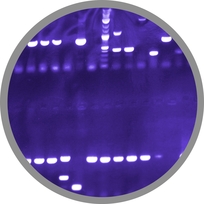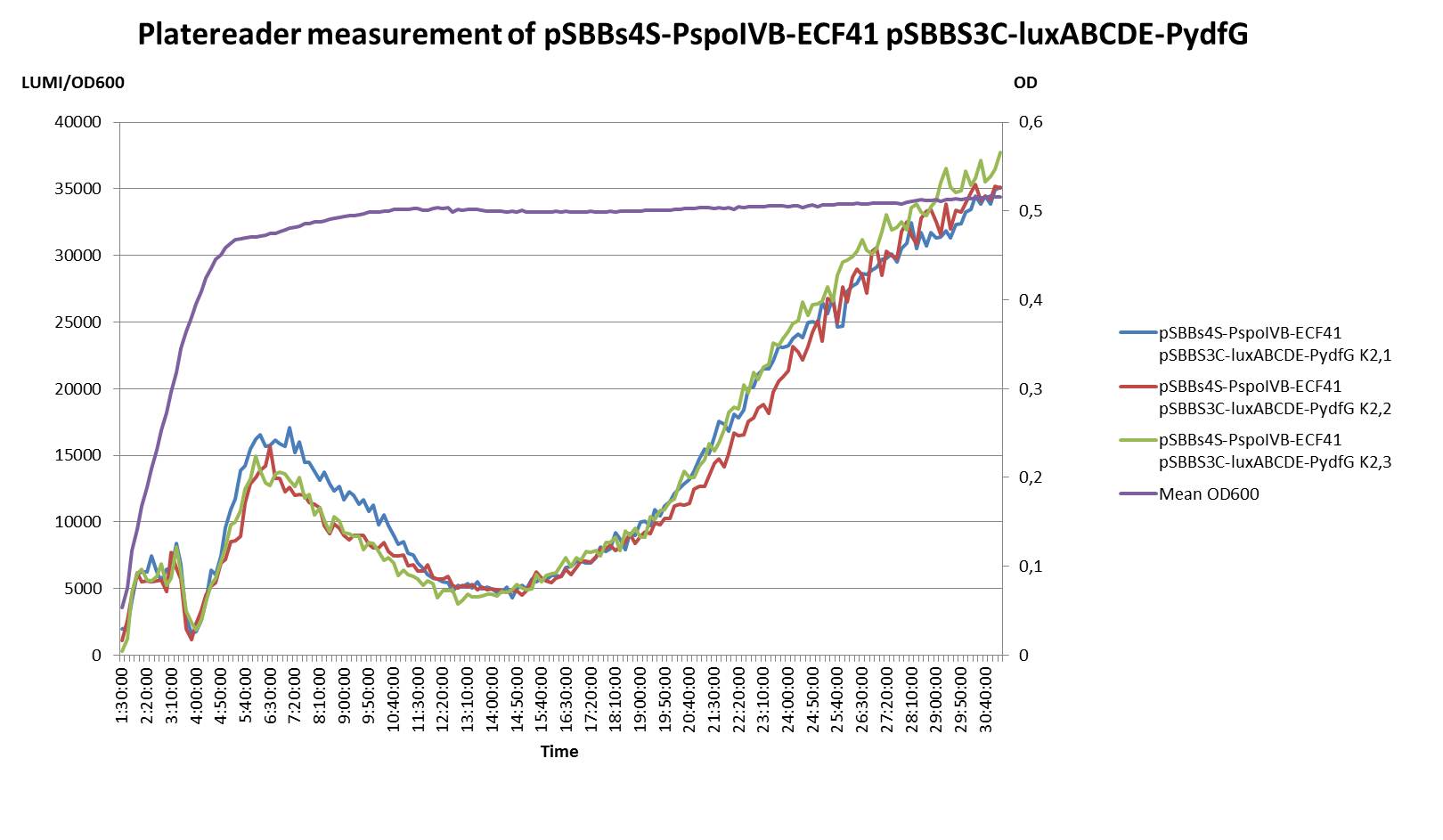Team:LMU-Munich/Data/Suicideswitch
From 2012.igem.org
| Line 24: | Line 24: | ||
<p align="justify">For this measurement, the ''Bacillus subtilis'' strain W168 [https://2012.igem.org/Team:LMU-Munich/Strains B63] was used. <br> | <p align="justify">For this measurement, the ''Bacillus subtilis'' strain W168 [https://2012.igem.org/Team:LMU-Munich/Strains B63] was used. <br> | ||
This puts the ''luxABCDE'' cassette in the place of the MazF later. Therefore, this output should reflect the expression of MazF in our <b>Suicide</b> switch. </p> | This puts the ''luxABCDE'' cassette in the place of the MazF later. Therefore, this output should reflect the expression of MazF in our <b>Suicide</b> switch. </p> | ||
| - | <p align="justify">σ<sup>G</sup>, the last sigma factor in the forespore, activates P<sub>''spoIVB''</sub>, which controls expression of ''ecf41<sub>bli aa 1-204</sub>'' in our module. Ecf41<sub>bli aa 1-204</sub> activates P<sub>''ydfG''</sub>, and thereby the production of | + | <p align="justify">σ<sup>G</sup>, the last sigma factor in the forespore, activates P<sub>''spoIVB''</sub>, which controls expression of ''ecf41<sub>bli aa 1-204</sub>'' in our module. Ecf41<sub>bli aa 1-204</sub> activates P<sub>''ydfG''</sub>, and thereby the production of luciferase as a substitute of MazF.<br> |
| - | <b>This | + | <b>This platereader measurement is the first and not reproduced to this point!</b><br> |
| - | We get an expected activation of the module in late stationary phase and therefore during | + | We get an expected activation of the module in late stationary phase and therefore during sporulation. It therefore seems to work.</p> |
<p align="justify">But we also get a much too early peak of luminescence at about six hours during transition state, maybe due to unspecific (stress-induced?) activation. As the Ecf41<sub>bli aa 1-204</sub> used is the truncated version which is constitutively "ON", this could lead to a high activation of the P<sub>''ydfG''</sub> promoter.</p> | <p align="justify">But we also get a much too early peak of luminescence at about six hours during transition state, maybe due to unspecific (stress-induced?) activation. As the Ecf41<sub>bli aa 1-204</sub> used is the truncated version which is constitutively "ON", this could lead to a high activation of the P<sub>''ydfG''</sub> promoter.</p> | ||
<p align="justify">This early peak, if it is activated in all cells and not a subset of the population, would probably be sufficient to kill the vegetative cells too early, before entering the sporulation cycle.</p> | <p align="justify">This early peak, if it is activated in all cells and not a subset of the population, would probably be sufficient to kill the vegetative cells too early, before entering the sporulation cycle.</p> | ||
Latest revision as of 13:41, 26 October 2012

The LMU-Munich team is exuberantly happy about the great success at the World Championship Jamboree in Boston. Our project Beadzillus finished 4th and won the prize for the "Best Wiki" (with Slovenia) and "Best New Application Project".
[ more news ]

Luminescence measurement of "Suicide switch-like" module
|
For this measurement, the Bacillus subtilis strain W168 B63 was used.
This puts the luxABCDE cassette in the place of the MazF later. Therefore, this output should reflect the expression of MazF in our Suicide switch.
σG, the last sigma factor in the forespore, activates PspoIVB, which controls expression of ecf41bli aa 1-204 in our module. Ecf41bli aa 1-204 activates PydfG, and thereby the production of luciferase as a substitute of MazF.
This platereader measurement is the first and not reproduced to this point!
We get an expected activation of the module in late stationary phase and therefore during sporulation. It therefore seems to work.
But we also get a much too early peak of luminescence at about six hours during transition state, maybe due to unspecific (stress-induced?) activation. As the Ecf41bli aa 1-204 used is the truncated version which is constitutively "ON", this could lead to a high activation of the PydfG promoter.
This early peak, if it is activated in all cells and not a subset of the population, would probably be sufficient to kill the vegetative cells too early, before entering the sporulation cycle.
Though we will have to make this measurement reproducible, we are hoping that the other, weaker promoter PsspK, which was not finished cloning, might be a better candidate. We hope that it will not have such an early peak and if so a much weaker one. But as the Ecf41bli aa 1-204 is so highly active it probably will still be sufficient to produce toxic levels of MazF.
 "
"





